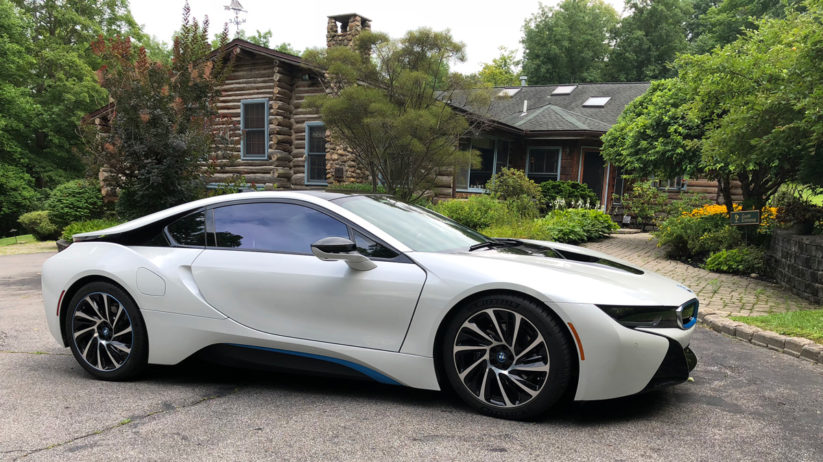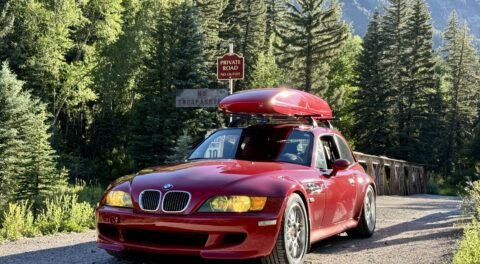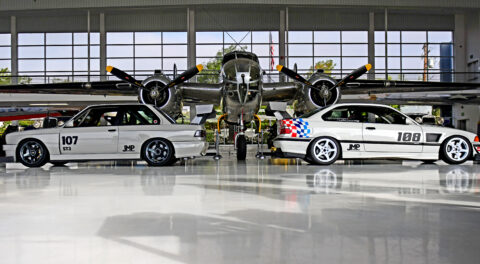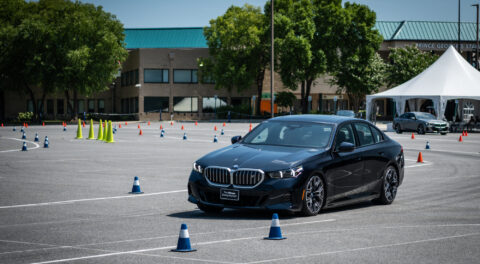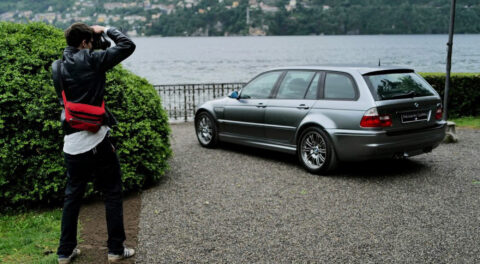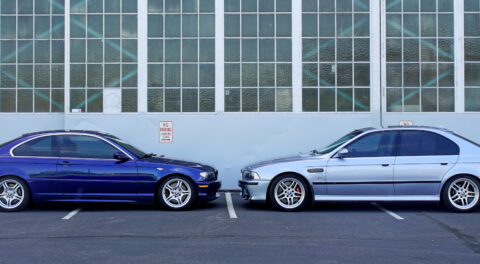My wife, Betty, and I like road trips. It’s not that we don’t like to use the airlines, but—oh, wait: It is that we don’t like to use the airlines. We’d rather drive and be masters of our own schedule. Now that Betty is retired and I can work almost anywhere from a laptop, we enjoy the freedom of driving whenever and wherever we want.
These days our road trips usually involve a 2016 X535d, a wonderful vehicle that cruises comfortably, consumes fuel delicately, and has plenty of luggage space. It has taken us as far east as Charleston, South Carolina, and as far west as Monument Valley, Arizona, and Arches and Canyonlands National Parks in Utah. Total miles on the X5 stand at 36,000—and that’s in the two years and four months since we took delivery at the BMW Performance Center in Greer, South Carolina.
Some quick math reveals that the X5 probably will run out of warranty miles before it runs out of warranty months, so for our current trip to upstate New York to visit family, we are taking another vehicle we love to drive. This one gets even better fuel mileage than the X5, but falls a teensy bit short in luggage space…
… because this other vehicle is our three-year-old dream car, the BMW i8.
The i8 is a traveler, too. It has been to many chapter events; it was the subject of an amazing Tim Lair photo shoot, and has even been on track at speed. It most definitely excels at drawing attention, but it also does well on road trips, such as when we took it halfway across the country to Oktoberfest 2015 in New Jersey.
So how does a mid-engine sports car with a tiny rear seat and an even tinier trunk meet our luggage needs when we’re used to filling up an X5 for most of our trips?
As it happens, I have experience in this area, and it does not involve a FedEx account to overnight clothing and shaving supplies to your next destination—although that might be something that owners of the new BMW i8 roadster might want to consider, since BMW somehow forgot to give the roadster a back seat.
I fondly remember my college graduation day, which happened to be the same day I received my second-lieutenant bars and was ordered to report to my first Army post, 500 miles away. In an eerily familiar portent of the future, my car at the time was a Lotus Europa S2—a fiberglass-bodied, mid-engine sports car with a tiny engine, an even tinier trunk, and questionable rearward visibility. Sound familiar?
On that last college day, I stuffed my worldly possessions into the Europa. What didn’t fit in the trunk—which was mostly everything—went in the passenger seat, since the Lotus, unlike my current plastic-bodied wonder car, had no rear seat. To see what was on the right side of the car, I inserted a cardboard tube about four inches in diameter through the mass of clothing and sporting goods to my right. It must have worked, because eight hours later I arrived safely at Fort Lee, Virginia.
With the i8’s capacious—by comparison—passenger compartment, I no longer require a cardboard sight tube. But I do need twice the luggage space, since the car is carrying two people. Nor will Betty allow me to just stuff things haphazardly into the back seat; clothing and personal items must be carefully folded and packed—like, you know, in suitcases. However, none of our suitcases fit in the i8’s rear seat, and duffel bags were not an option, either.
Then one day I spotted a strange-looking suitcase in a store window. It was long and narrow, and made by a company called Herschel. I looked online and discovered multiple sizes, including one that was sixteen inches wide and 30 inches tall—exactly the dimensions of a rear seat in the i8. Betty was happy, and once I wrestled them into the car, they rested comfortably like two little people— but never asked, “Are we there yet?”
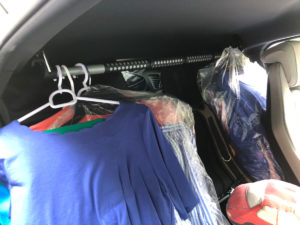
The thoughtful i8 engineers who normally were psychopathic about saving weight blessed us with a couple of hooks for a clothes bar, upon which Betty could hang things she didn’t want wrinkled in a suitcase. A garment bag lying across the engine cover for my non-suitcase items completed the luggage puzzle, leaving enough room in the “trunk” for a car cover and a bag of Griot’s Garage car-care products—because there’s an unwritten law that the i8 may never be be seen in public unless it is clean and shiny. (Kind of the opposite of Satch Carlson’s Z8.)
Now that ten days worth of necessities were packed into the i8, it was time to treat it like a normal car and head out onto the road—this time for 1,100 miles each way.
BMW calls the i8 a plug-in-hybrid sports car, which is accurate, since it is a hybrid, and a very sporty car. Steering is quick and precise; understeer is more common than oversteer, but the occasional push caused by an aggressive turn-in can be moderated with some trail-braking. The Michelin Pilot Sport 4S tires I just installed seem to improve the car’s handling over the original Bridgestones, but I need to get the car back to the track or onto some mountain twisties to tell how much better.
I can attest that the Michelin PS4S tires did great in the rain. While we transited I-70, the rains fell in most of Illinois, some of Indiana, and a good chunk of Ohio, so it was a fair test.

I’ve had the i8 on track at Hallett in Oklahoma, and despite stock tires and brakes, it was very fast; wth race tires, it might be as fast or possibly faster than my E36 M3 race car, but only as long as the high-voltage batteries are charged. Once they’re drained and the electric motor’s sizable torque boost is gone, the car is still quick, but not blindingly so. It approached 100°F that day at Hallett. On a cooler day the batteries might have lasted longer.
So yes, the i8 is a sports car—but it might also be called a Grand Touring car. In the old days, a GT car was a luxurious performance car that generally could handle any paved roads a continent had to offer, while transporting its occupants in comfort. The term originally applied to front-engine, rear-wheel-drive cars, but I think the i8 fits the description, as long as only two people need to get somewhere and their luggage fits in the back seat.
The i8 can cruise the highways all day long in comfort, and if you find yourself on a two-lane road behind a couple of tractor trailers, you can flip it into Sport mode, drop down a gear with the paddle-shifters, step on the gas, and be past them in less time that it took to describe it. All of this is possible despite getting really good fuel mileage (36+ miles per gallon so far on this trip). The eleven-gallon fuel tank makes for quick fill-ups at the pump, but stops at gas stations and rest areas can still take more time with the inevitable questions and requests for photos.
The seats are surprisingly comfortable, even after eight or ten hours in the saddle, despite appearing a bit thin in upholstery thickness. The suspension is firm, but the ride is not harsh. Sport mode does stiffen the ride, so that’s the tradeoff when you want more power now, tighter steering, and better cornering. But when you need all that, it’s worth it. The seats are motorized and heated, and the steering wheel is manually adjustable, so it’s no problem finding the right seating position.
I’m not an audiophile, so the sound system works just fine for me. Lack of AM radio is not an issue, since BMW Connected Drive can import AM from your iPhone, along with Pandora and other streaming audio services.
One aspect of the i8 that we occasionally find handy on road trips is eDrive, the all-electric mode. It’s very useful in traffic jams, since in stop-and-go jams, the gasoline engine constantly idles or shuts down and starts up. But in eDrive, the electric motor uses only battery power while under way, saving fuel and wear and tear on the gasoline engine.
Yes, the i8 is capable of handling long road trips. In fact, if you operate within its cargo-space limitations, it excels at it. And that’s a good thing, since it would be sad for such a magnificent car to spend its life puttering around town.
If you need to carry more stuff, or if your trip involves exploring for old Shane filming locations in Jackson Hole, Wyoming, or trekking to Kintla Lake north of Glacier National Park in Montana, take the X5; do not take an i8. But if the highway is your way, the i8 is a fun and mostly practical way to go.—Scott Blazey


